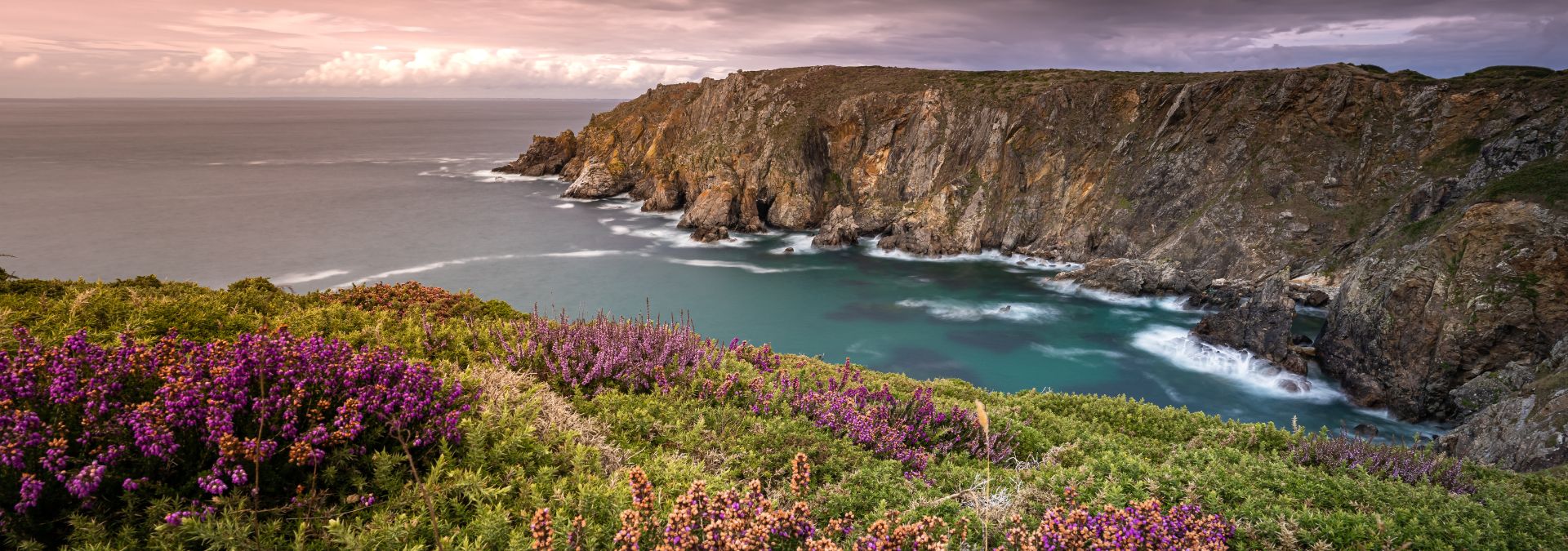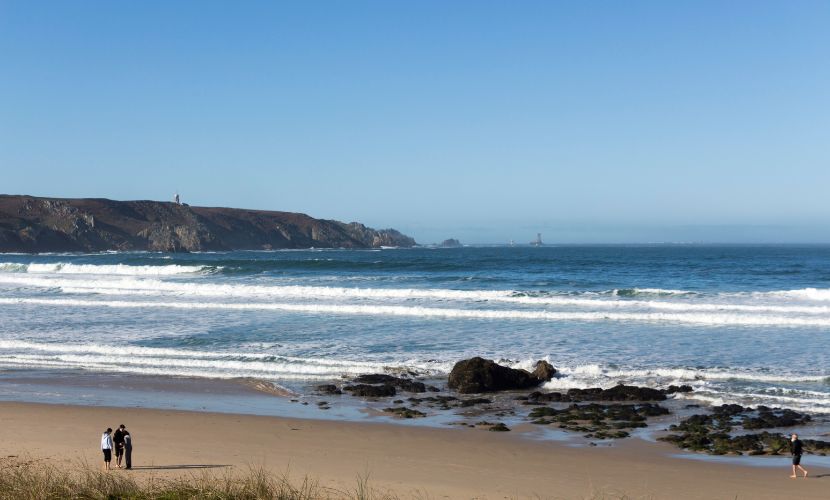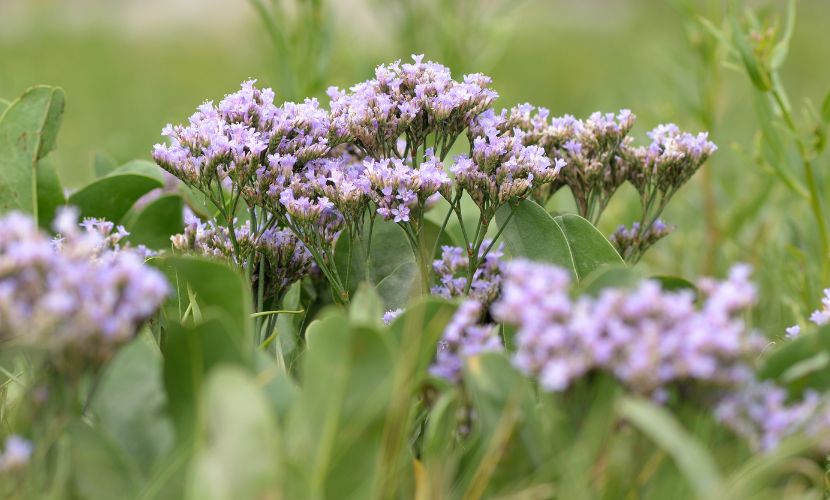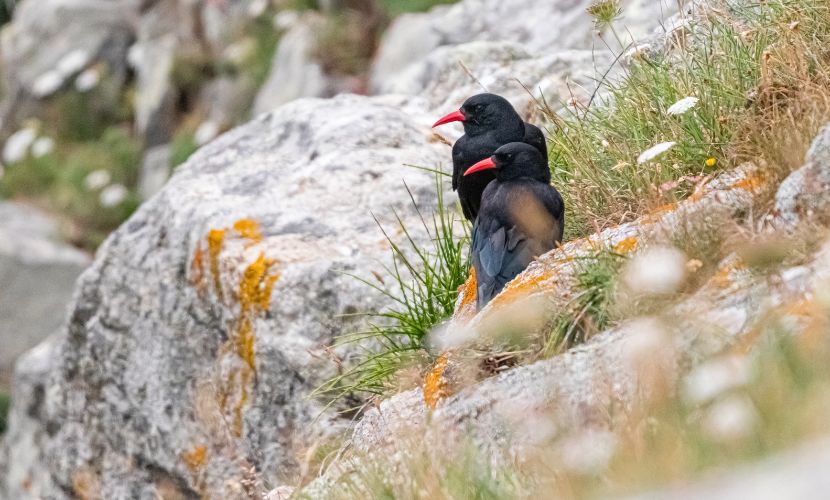
An open-air laboratory
At the far western tip of Brittany, the Pointe du Raz is a natural laboratory, ideal for observing and studying unique ecosystems that have adapted to extreme conditions, and making this site a prime environment for research. Geologists, climatologists and oceanographers study ancient rock formations, complex marine dynamics and the impacts of climate change.
These landscapes are born from an ever-changing history and geography. The morphology of the coastline and the particular climatic conditions of Cap Sizun (the zone at the very tip of western Brittany) have enabled exceptional natural habitats to develop on the reefs, cliffs and dunes here. The Cap Sizun Reserve covers the communes of Cléden-Cap-Sizun and Goulien, and is part of this protection programme, offering a range of activities for visitors. Out at sea, the Iroise Natural Marine Park monitors and studies the local marine environments and works to protect them.
A dream-come-true for botanists
Some truly fascinating plant species thrive here on the windswept moors, cliffs and meadows. Rock samphire (Crithmum maritimum) and the carnation-like flowers of sea thrift (Armeria maritima) colonise the rocks, while rare species such as lax-flowered sea lavender (Limonium humile) and sea carrot (Daucus carota subsp. gummifer) have also adapted well here. This vegetation on the coast echoes the scientific monitoring of other sites in Finistère, where various other species flourish: Pylaes’ Sphagnum or clubmoss in the Arrée Mountains, the moors of Menez Meur in Hanvec and Cragou, and the Glénan Narcissus (Narcissus triandrius subsp capax) found in the Glénan archipelago. These fragile environments, rich in endemic species, require special attention to preserve their exceptional biodiversity.
The kingdom of seabirds
Every spring, the Cap Sizun welcomes back familiar seabird species such as the Common Murre, Black-legged Kittiwake, Northern Fulmar and European Herring Gull, coming to nest on its steep cliffs. The coastline of the Grand Site is one of the biggest breeding grounds for seabirds in France, so it’s an ideal place to observe these beautiful and fascinating birds. As well as seabirds, you can spot remarkable species such as the Peregrine Falcon, the Common Raven and the Red-billed Chough, living here all year round. This ornithological heritage is part of a rich mosaic of natural habitats in Finistère: Vénec nature reserve is home to the Northern Harrier, Trunvel lake is home to both the Bearded Reedling and the Eurasian Reed Warbler, and the Glénan islands are home to Roseate and Sandwich Terns. This part of western Brittany really is a dream come true for birdwatchers!
Useful links
Contact the tourism office:
More information:



